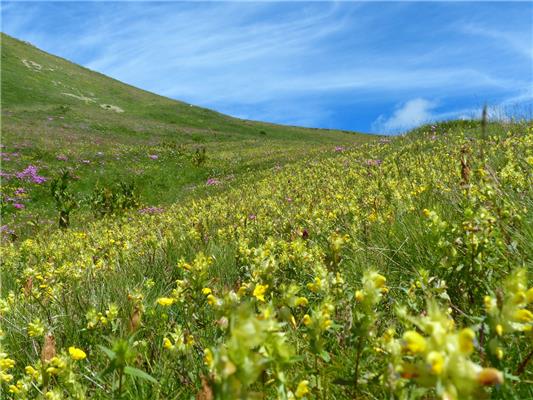| Online: | |
| Visits: | |
| Stories: |

| Story Views | |
| Now: | |
| Last Hour: | |
| Last 24 Hours: | |
| Total: | |
Vampire’ Plants Can Have Positive Impact up the Food Chain
By altering the densities of the hemiparasite (a parasitic plant that also photosynthesises) Rhinanthus minor, in the Castle Hill National Nature Reserve in Sussex, ecologists from five universities including the universities of Lincoln, York and Sussex were able to assess the impacts of these ‘vampire’ plants on the biodiversity of a species-rich semi-natural grassland. The scientists compared the plant and invertebrate communities in areas where R. minor was removed, left at natural densities, or increased in abundance.
Lead author Professor Sue Hartley, of the Department of Biology at the University of York and Director of the York Environmental Sustainability Institute, said: “This was a really unexpected finding. Although hemi-parasites are known to increase the diversity of other plants in the community by suppressing the dominant species they parasitize and so allowing other plants to flourish, none of us predicted there would be such dramatic and positive impacts on other components of the grassland community.
Dr Libby John, Head of the School of Life Sciences at the University of Lincoln, UK, who was a member of the research team, said: “Overall, our findings demonstrate that parasitic plants can have dramatic and lasting impacts on abundance, richness and diversity across multiple trophic levels within semi-natural grassland communities. Our study provides a clear demonstration of the importance of indirect interactions as major structuring forces in ecology and the strong cascading effects of these interactions across trophic levels. Our results also illustrate that keystone species such as R. minor can have both negative and positive impacts on other species.”
Understanding the impact of species on community structure is a fundamental question in ecology and there is a growing body of evidence that suggests that both sub-dominant species and parasites can have disproportionately large effects on other organisms.
Plots with natural and enhanced densities of R. minor had lower plant biomass than plots without the hemiparasite, but in enhanced densities the number of invertebrates was almost doubled, with effects evident in herbivores, predators and detritivores – emphasising its role in grassland communities.
The results demonstrated that the manipulation of a single sub-dominant plant species causes substantial changes in the abundance and diversity of organisms across four trophic levels.
The changes induced in the plant community were consistent with previous studies of the impact of R. minor, particularly in the suppression of grasses. However, the striking enhancement of invertebrate abundance across several trophic levels has not been recorded previously.
Contacts and sources:
Full bibliographic information‘Hemiparasitic plant impacts animal and plant communities across four trophic levels’ S.E. Hartley, J.P. Green, F.P. Massey, M.C.P. Press, A.J.A. Stewart and E.A. John. Ecology http://dx.doi.org/10.1890/14-1244.1 http://www.esajournals.org/doi/abs/10.1890/14-1244.1
Source: http://www.ineffableisland.com/2015/06/vampire-plants-can-have-positive-impact.html




